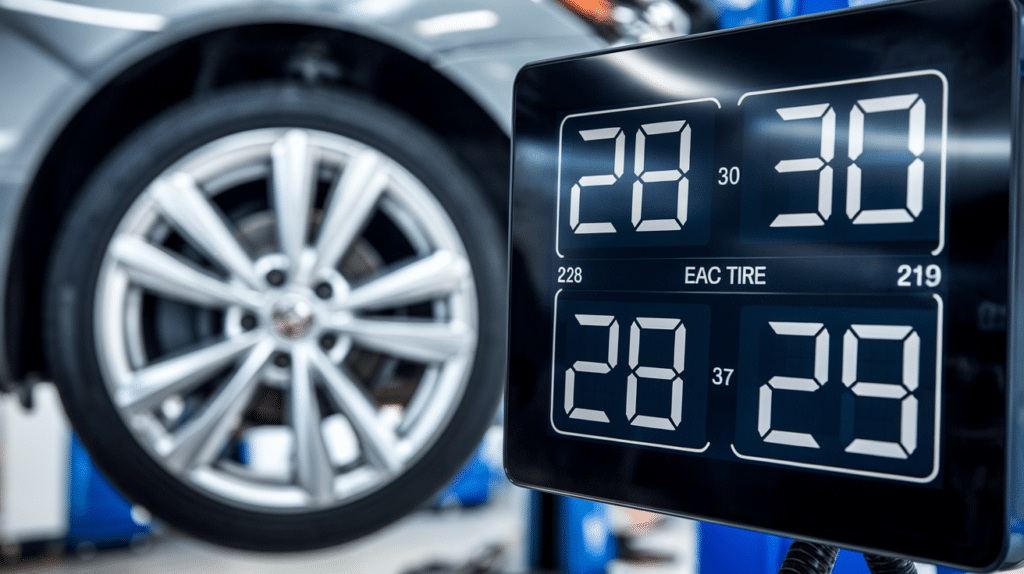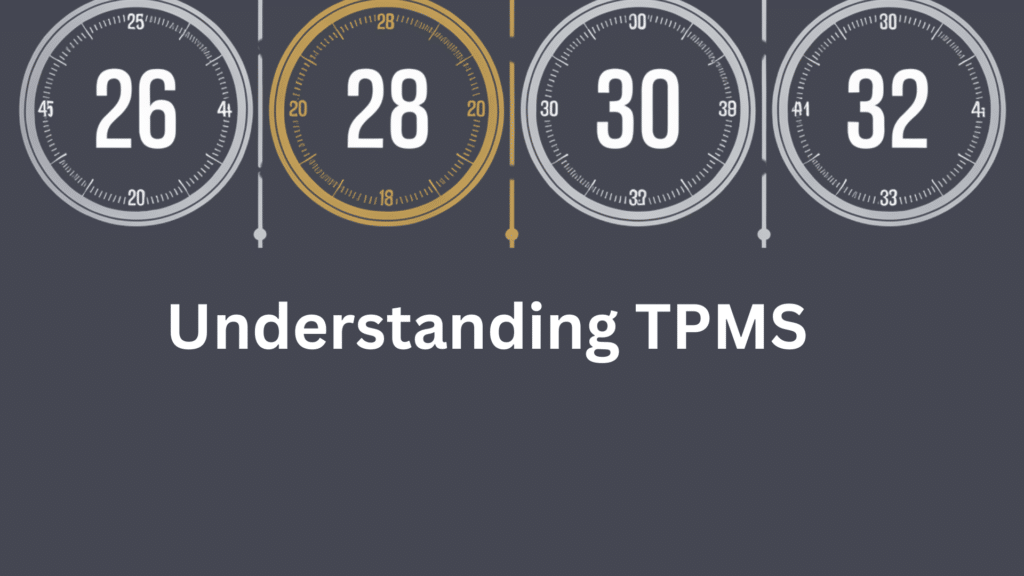I’ve dealt with these systems plenty of times, and I know they can be confusing when that warning light suddenly appears on your dashboard.
I will walk you through everything you need about your tire monitor system.
What is a Tire Monitor System?

A tire monitor system (or Tire Pressure Monitoring System—TPMS) is your car’s way of telling you when your tires need air.
I think of it as a helpful friend who taps you on the shoulder when your tires are leaking. It uses sensors to check your tire pressure and warns you when it drops too low.
This system is installed in most modern vehicles and has been mandatory in all new cars since 2007.
The technology has improved over the years, making it more reliable and easier to understand for drivers like us.
Why is it Important for You?
I can’t tell you how many times proper tire pressure has saved me from trouble on the road:
Safety First
When my tires are properly inflated, my car stops better and handles more safely in rain or snow. Underinflated tires can lead to blowouts, especially during hot weather or heavy loads.
I’ve seen this happen to other drivers, and it’s scary how quickly you can lose control.
Money Saver
I notice the difference in gas mileage when my tires have the right pressure. More air = less gas used.
Studies show that properly inflated tires can improve fuel efficiency by up to 3%, adding to real savings over time. I’ve saved about $50-100 per year just by keeping my tires properly inflated.
Tire Lifespan
By keeping the pressure right, I’ve made my tires last years longer, saving hundreds of dollars.
Underinflated tires wear unevenly along the edges, while overinflated tires wear more in the center. Both conditions mean you’ll be shopping for new tires sooner than necessary.
Comfort
Have you ever driven with low tires? The bumpy, wobbly feeling goes away when they’re properly inflated.
Your car’s suspension system works better when your tires have the right air, giving you a smoother ride and reducing fatigue on long trips.
What Important Aspects Does it Include?
The sensors themselves are pretty fascinating. They’re battery-powered and must withstand extreme temperatures, constant motion, and road impacts.
Some are valve-stem mounted (attached to the valve where you add air), while others are banded to the wheel rim inside the tire.
The type your vehicle has affects how they’re serviced and replaced when needed.
When I look under the hood of how these systems work, there are a few key parts:
- Sensors: Small devices inside your tires that measure pressure.
- Control Unit: The brain that processes the tire information.
- Warning Light: That annoying (but helpful!) tire symbol on your dashboard.
- Display: Some newer cars I’ve driven show the exact pressure of each tire.
Here’s How it Works
There are two main types of systems: direct and indirect. Direct systems have physical sensors in each tire that measure actual pressure.
Indirect systems use your anti-lock brake sensors to detect if one tire is spinning faster than the others (which happens when a tire is low on air).
Most newer cars use the direct system because it’s more accurate, but it’s good to know which type your vehicle has when troubleshooting issues.
Let me walk you through what happens with your tire monitor system:
- As you drive, the sensors constantly check your tire pressure.
- This information gets sent to your car’s computer.
- The warning light turns on if any tire drops below the safe level.
- That’s your cue to check your tires and add air as needed.
Tips to Ensure That the Monitor System Works Properly
Temperature changes can also really affect tire pressure. I’ve noticed my TPMS light often comes on during the first cold snap in the fall.
That’s because, for every 10°F drop in temperature, tires lose about 1 PSI of pressure. So don’t be surprised if your light comes on when seasons change – it’s just physics. Just add a little air and you’ll be good to go.
Here’s what I do to keep my system working right:
- Monthly Manual Checks: I still check my tires with a gauge once a month, just to be sure.
- Follow Pressure Guidelines: I always inflate to the pressure on the sticker inside my driver’s door, not what’s on the tire itself.
- Reset After Adding Air: With my car, I need to press the reset button after adding air. Your manual will tell you if you need to do this, too.
- Don’t Ignore Warnings: I check my tires that day when my light comes on. It’s usually a quick fix.
- Be Aware of Sensor Battery Life: My mechanic told me these typically last 5-10 years before needing replacement.
Maintenance and Suggestions
One thing I’ve learned is that tire pressure monitoring systems need some attention during routine maintenance.
When your tires are rotated (every 5,000-8,000 miles), the technician should check that all sensors are functioning properly.
Also, if you notice the warning light flashing for about a minute before staying solid, that usually indicates a system problem rather than low pressure.
This distinction has saved me from unnecessarily adding air when the issue was with a sensor
From my experience taking care of these systems:
- Tell your tire shop you have TPMS before getting new tires. I learned this the hard way when they damaged one of my sensors.
- If you swap between winter and summer tires like I do, you might need to reprogram the system each time.
- After driving through muddy conditions, I ensure the sensors aren’t dirt-caked.
- If your warning light stays on even after adding air, don’t panic! I usually take it to my mechanic for a quick check.
Conclusion
Your tire monitor system is there to help keep you safe and save you money.
I’ve found that paying attention to it has made my driving safer and my tires last longer.
When that little light comes on, don’t ignore it—your car is trying to tell you something important!
Frequently Asked Questions
What does a service tire monitor system mean?
This message on my dashboard means there’s a problem with the monitoring system itself, not necessarily my tire pressure. Usually, it needs a reset, or a sensor might be faulty.
How much does it cost to fix a tire pressure monitoring system?
In my experience, fixing these systems costs between $50 and $250. When I needed one sensor replaced, it was closer to $50. A full system repair cost me about $200.
Can I drive with the tire pressure light on?
I’ve driven to the nearest gas station when my light comes on, but I wouldn’t go further than that. Once, driving too long with underinflated tires damaged my tire sidewalls, and I had to replace them early.
Do all cars have tire pressure monitoring systems?
My older car from 2006 didn’t have one, but all cars made after 2007 in the US must have these systems. It’s been a standard safety feature ever since.
How do I know if my tire pressure is low or if the sensor is faulty?
I always check with a tire gauge first. If the pressure reads normal but the light stays on, it’s usually a sensor issue. My mechanic can test the sensors to confirm what’s wrong.


